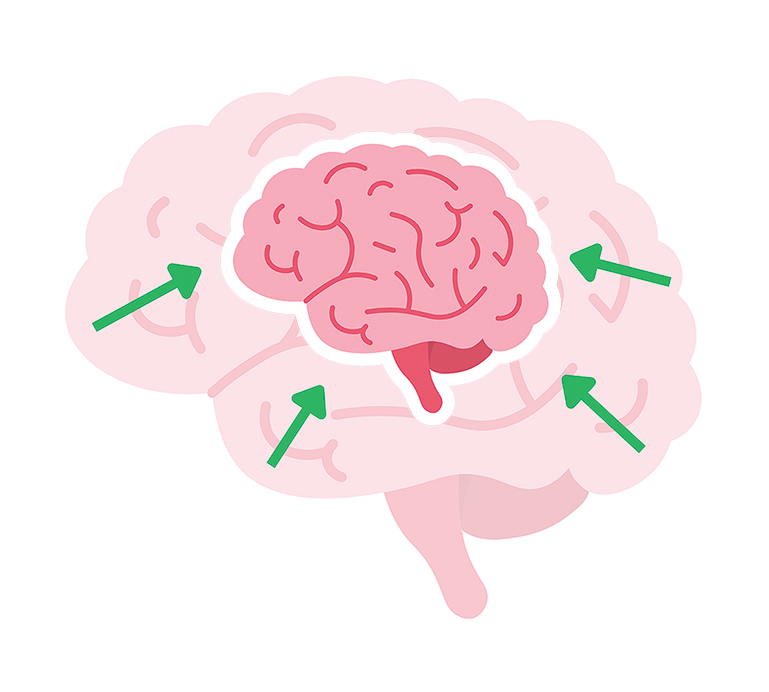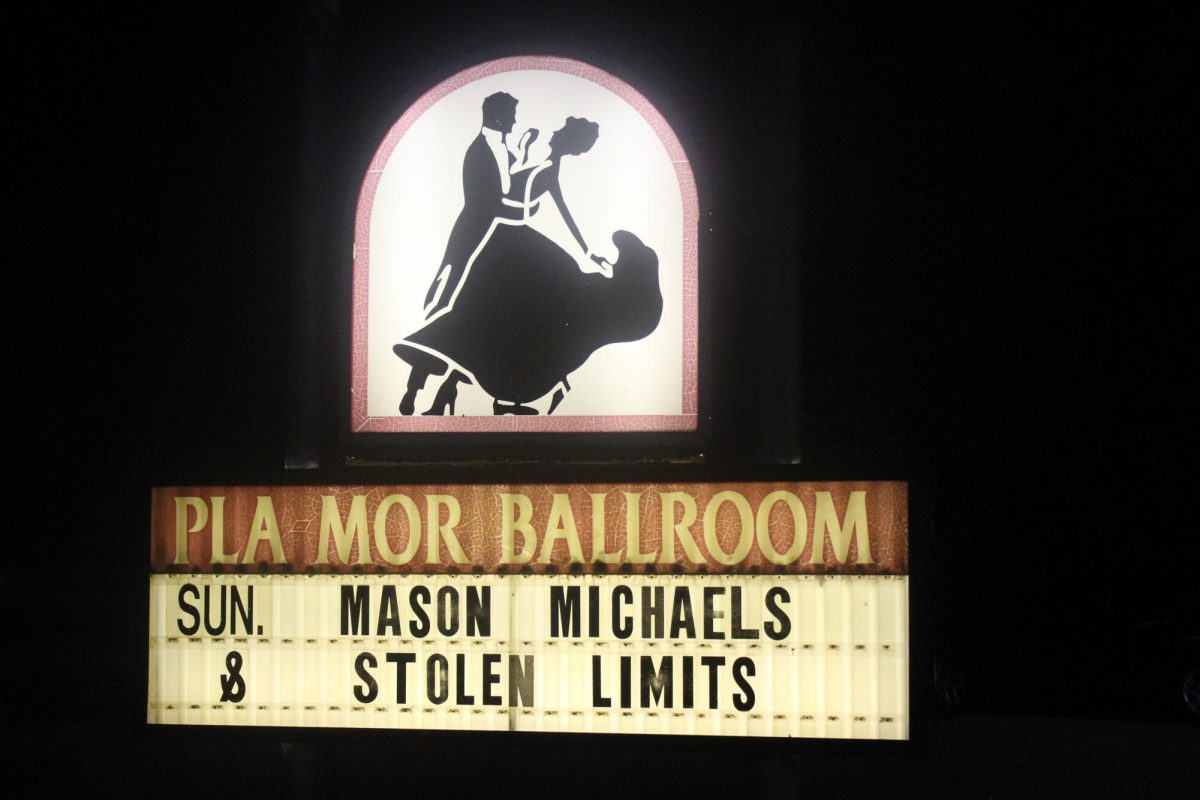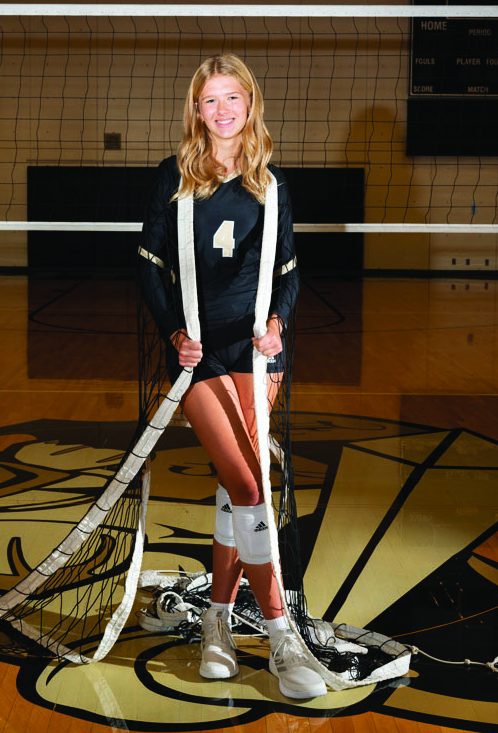Sent Away: Pulling back the curtain on the “Troubled Teen” Industry
photo taken at the wilderness program
those attending the wilderness program are given time to journal
May 23, 2022
At 6 a.m. on May 14, 2020, Anne (12) was sleeping soundly when two strangers entered her room, turned on the lights and said, “We’re taking you to Utah.”
Without knowing it, she was being “gooned.” This is the term used to describe the legal kidnapping of a person who is to be escorted to a therapeutic or recovery program.
Still unaware of what was occuring, Anne was brought to the airport and told that she could call her mom when she arrived in Utah.
“I didn’t get to say goodbye to any of my friends or my parents,” Anne said, who was a sophomore in high school at the time.
“And the lady lied to me; I did not get to call my mom when I got there.”
Wilderness Therapy
After the long plane ride, during which she was able to come to terms with where she might be heading, the two strangers dropped Anne off at a “Wilderness Therapy Program” in Utah.
Most wilderness therapy programs define themselves as a mental health treatment strategy that helps adolescents experiencing maladaptive behaviors by providing challenging outdoor experiences along with therapy.
Some mental health professionals, though, claim these programs have found “loopholes” in order to avoid regulation.
“[The programs] call themselves wilderness therapy or come up with their own categories so they can avoid the criteria that would apply to, for example, a mental health treatment facility,” Child Psychologist Nicki Bush told The Atlantic in 2014. “Then because they’re not regulated, no one is really ensuring their staff has adequate training, and in many cases we’ve seen, the staff are by no means qualified to provide the type of care that is being advertised and certainly not the type of care that these facilities require.”
Upon arrival, those attending the program are sent to– as Anne says they called it– “get outfitted.” She was given two pairs of pants, two shirts and a week’s worth of underwear that she would have to make do with until the start of another week.
Then, they were given their backpacks.
“Now these backpacks literally weigh like 60-70 pounds, mind you I’ve never hiked before so I’m like, what is going on?” Anne said. “I think I still have stretch marks on my back from my backpack.”
Anne says she was then given a food ration for the week– the majority of it dehydrated so she could prepare it herself– which typically consisted of rice, oatmeal, beans, a jar of peanut butter for protein, a bag of trail mix and a couple of noodle packets. However, says Anne, the noodles were not your typical ramen noodles, but instead, “the gross ones.”
“We had to get our water from the lake and put bleach in it to clean it,” she said. “We’d go to the guides and they’d put our drops of bleach in our water and we wouldn’t be able to drink it for 30 minutes.”
Anne says their time for showering was once a week, five minutes.
“I just remember the water was brown,” she said.
The counselors made it known that if a shower was over five minutes, there would be a punishment, but Anne says she never got to find out since she made sure to always be quick.
“It was just so dehumanizing,” she said, comparing the constant orders to being rounded up like a herd of cattle.
After two months of attending wilderness therapy, Anne was to be picked up by her parents. She says the program made sure every time a person was set to leave, they were showered and well groomed.
Reflecting on her stay, Anne says she thinks the wilderness program had some benefits. All throughout her freshman and sophomore year, she says she was having problems with substance use, and wilderness therapy helped with this.
“It scared me enough to get sober,” she said. “I wasn’t doing hard drugs, just smoking weed, an immense amount; There was not a time where I wasn’t high. I don’t remember things from freshman through sophomore year.”
As a result of her wilderness experience, she learned coping mechanisms that were different from ones she had previously used, and she realized she could do things that she never knew she could.
“I haven’t smoked in two years. That’s how I used to cope with my anxiety,” she said.
She says the experience created a mindset for her that helps with anxious feelings.
“Like if I can do all the s**t that I did the year of 2020, I could give this class presentation, things like that. I try to think of it in a more positive way,” she said.
Not everyone gets gooned. The tactic is typically only used for those who are resistant to being sent to these programs. But in Jane’s experience, she decided to go willingly on advice from an “education consultant” who was highly recommended to her parents.
For Jane, her stay at the program– which was the same location as Anne’s–has more negative feelings connected to it than Anne’s for one big reason: Jane attended the program through the winter.
In her time at wilderness therapy, she was forced to endure freezing temperatures, hike on icy terrain and suffer great illness.
Since Jane began the program in the fall, she was issued the fall clothing due to her arrival time and was never given some of the items issued for winter.
“The coldest it got was on New Year’s Eve. It was negative 15,” she said.
The frigid weather was dangerous.
“The girl who I rode [to the program] with, she got frostbite and almost lost one of her toes,” she said. “And they didn’t take her to the doctor.”
According to Jane, many would try to run at night, and the guides would follow them, but not interfere until necessary. However, they could not access their shoes after bedtime, so they would be barefoot.
She heard horror stories about people getting frost bite when they ran away barefoot in the middle of the night.
“And the people would just watch them until it was critical, to prove they shouldn’t [run],” she said.
Additionally, when Jane was “getting outfitted,” she says despite not having any history of drug use, she was strip searched [the act of searching someone for concealed items, typically drugs or weapons, in a way that involves the removal of all their clothes] with the door wide open.
At one point, she became quite ill, yet was not allowed to visit a doctor until she passed out from hitting her head on a rock while hiking.
Jane says the program took thousands of pictures throughout the time spent there, but only the photos where she was smiling, or didn’t look visibly upset, were sent home to her parents.
Additionally, privacy was not taken into consideration when sending these photos home.
“The photos were available to everybody, even if your child wasn’t in them,” she said.
This detail concerned Jane because it gave others the opportunity to exploit these photos without their permission, if they chose to do so.
Jane says that– similar to Anne– “resilience” was also one of the positives she experienced from wilderness therapy.
“I had really bad anxiety,” she said. “The beginning of sophomore year I stopped going in-person because I was having panic attacks in every single class.”
After the wilderness program however, Jane realized these feelings were no longer as pressing of an issue.
“Way worse things were happening so I had to deal with that,” she said. “So then I came back and I was like ‘Oh, that doesn’t make me anxious anymore.’ That was the only good thing though.”
Jane recognizes that although her stay was not pleasant whatsoever, she may have had it better than some because she believes the wilderness program she attended was a lot safer than others she’s heard about.
“We always went back to get food restock at the hill,” she said. “But most other [programs], you have to hike to, and if you don’t make it to the point, you just don’t get more food.”
Therapeutic boarding schools and “The Ranch”
For both Anne and Jane, wilderness therapy was just the beginning. Their next destinations are where most of their negative feelings towards the “Troubled Teen” Industry were fostered.
Vox reported on the industry in an article titled “I went into the woods a teenage drug addict and came out sober. Was it worth it?” According to the story, those who run these programs hire transporters and “education consultants” to “exert tremendous pressure on transitioning children from wilderness directly into a therapeutic boarding school regardless of the child’s progress in wilderness,” all for the money.
“Yeah, or else ‘it doesn’t work,’” Jane said, quoting what she had been told as the reason for attending a second program.
Anne attended a Ranch also located in Utah, and Jane went to a therapeutic boarding school– two institutions with similar missions.
If “The Ranch” sounds familiar, it may be due to the common “solution” prescribed to patients who go on the televised therapy talk show, “Dr. Phil.”
The Internet Star Danielle Bregoli, aka Bhad Bhabie, who first gained her popularity from the show, was ordered to attend one of these locations after additionally being sent to a wilderness therapy program prior.
Anne says the Ranch was actually “right down the street from Bhad Bhabie’s ranch.”
According to Anne, the Ranch was not originally built to become a mental health facility.
“The Ranch was an old guy’s mansion and he had houses for each of his kids. And that’s where we stayed, those were our cabins,” she said. “I think his kids sold the Ranch to [the current owner of the Ranch], and then decided to do whatever came out of that.”
At the Ranch, Anne says privileges are awarded in phases, starting from orientation phase where students cannot stand within arms length of a staff member, yet have to always be visible by the staff when using the facilities. Anne says that as a student shows good behavior, the restrictions begin to loosen and they are allowed special “privileges,” such as being allowed to eat whenever one wants to.
“And then phase three, you can finally wear makeup, jewelry and curl or straighten your hair. And you can wear a backpack to school. Because those are privileges. And it’s a privilege to not be arms length and take a s**t by yourself,” Anne said.
The goal for everyone was to reach the highest possible phase. Anne compares it to “a game.”
Anne says they would sometimes have therapy sessions, but they were hardly beneficial. And aside from the therapists, the workers who the teens were around the most, were not qualified to deal with mental health.
“The staff were college students,” she said. “Not like certified therapists or whatever. They were just the staff.”
Anne says the Ranch preached structure and neatness, and that she was punished for minor details.
“I put my towel in the hamper, and the corner was hanging off the hamper. I got in trouble for that,” she said.
If there is a violation of rules, privileges are revoked. The SOS level, though Anne is unsure what it stands for, was basically a removal of all privileges.
“You’re not allowed to talk on SOS which is just, again, dehumanizing. Like, freedom of speech, I can talk if I want,” she said.
Meals, according to Anne, were not enjoyable, and left her and the other students ravenous.
“I kid you not, every morning we got scrambled eggs. They weren’t even real eggs. They were like the prison eggs, the powdered ones, so they were actually nasty,” she said.
Anne says the portions were much too small to satisfy her hunger.
“I’m a tall girl, I need to eat more than other people. I don’t eat the same as this little 13-year-old sitting across from me that’s like 5’2,” she said.
Aside from measly portions of unappealing food, Anne would often receive a small nighttime snack of trail mix or the cheese and peanut butter crackers called Munchies, as well as occasional apples.
Anne says that students would apply for certain jobs such as the “kitchen manager,” which meant a single student in charge of food order.
“[The kitchen manager] would always forget to put in food orders so sometimes I wouldn’t even get my apples,” she said.
Anne says there was one cafeteria worker who went by the name of “Mama.”
“Everyone would try to be nice to her because she decides what we eat. So every time we walk into the dining hall we’d be like ‘Hey, Mama!’” Anne said.
Although Anne was allowed to wear the clothes of her choice, she says the dress code was strict.
“The shorts had to be knee-length. So on my little two-day break from wilderness to the Ranch, guess where I went? I went to Dick’s and got myself some boy shorts,” Anne said.
Anne says during her stay at the Ranch, she saw things she “didn’t need to see.”
At these two locations, both Anne and Jane witnessed others self-harming, or even attempting to take their own lives.
Jane describes the staff at her boarding school as “neglectful,” saying they hardly interfered unless necessary.
At times when others were having traumatic flashbacks or panic attacks, the teens were not allowed to help due to a “no interference policy” set in place by the staff, and would get in trouble if they did help.
“We all knew how to deal with it since we’d all seen it enough times, so we’d be able to calm them down,” she said. “But the staff would be like, ‘You can’t do that.’”
Impact on mental health and relationships
Throughout the course of the experience, Anne says she struggled to find a way to communicate what she was experiencing with her loved ones. But once she had returned home permanently, Anne was able to finally come forward and talk to her family about it.
“I told them everything because I trust my parents. And I don’t blame them, they had no idea,” she said. “They told me I was going to a therapeutic boarding school, which is what they thought it was.”
Jane says she and her family, too, were not well informed about the programs beforehand.
“The website makes it look like a summer camp,” she said.
Additionally, she says the “Educational Consultant”– whom Jane and her family had greatly put their trust in due to others’ positive regard for him– had told them that any negative reviews online were children who had just not wanted to be sent away.
“To a parent, that probably sounds kind of legit,” she said.
Jane and Anne both believe the staff appeared to mostly have good intentions.
“Some of the staff think they’re doing a good thing; like they’re trying to help,” Anne said.
But despite their efforts, Jane thinks they just “did not understand enough to be effective,” due to the fact that most of them had never dealt with mental illness before.
Jane thinks that not only was it a difficult situation for her and the other people attending the programs, but it was emotionally taxing on the workers, as well.
“A lot of them ended up quitting when I was there,” she said. “One guide… I would cry and talk to her and she then quit the next week.”
Anne believes the owners of the programs are the ones responsible and who should be held accountable.
“The people that are to blame are those corporations. They need to realize there’s other ways. You don’t have to dehumanize kids that already don’t think they’re worthy of anything.”
Jane believes the industry is only there for making money, and its efforts are not sincere in trying to help children.
“I think it just puts everyone in a bad situation except for the execs that are making money off of it,” she said.
With a couple hundred dollars in fees per day, and the $1,000 worth of gear they receive, the guides and workers at these programs are still not greatly paid. According to Ziprecruiter, the national average pay of a wilderness Therapy guide is $16 an hour, and Indeed says a Direct Care Worker at the Ranch Anne attended makes $11.96. Jane thinks the rest of the money is being pocketed by the business owners. She says the wilderness program even provided a “discount,” which allowed for the price to decrease each day in order to prevent parents from pulling their children.
Returning home after a long period of being MIA from normal life is another situation Jane and Anne had to face. Jane says becoming a social outcast was “probably the hardest thing” that came out of the experience.
“I came back from this terrible thing and then I was like ‘Oh my friends are going to hang out with me, this is going to be fun,’” Jane said. But instead, it was actually the opposite. She says a lot of her friends thought she was “ghosting” them because of her abrupt disappearance from their lives, and as a result did not have any friends for the entirety of the summer when she returned.
Jane says that certain sensory information– mostly auditory– will give her flashbacks.
“Sometimes I get triggered, but not super bad,” she said. “The main thing is songs because the guides would play them when we were driving across the interstate. So there’s certain songs that when I hear them I freak out.”
She believes that trauma does not always develop immediately, and the effects of the situation may not be realized until years after the experience occurred.
“It’s such a shock,” Jane said. “I think it didn’t hit one of my good friends until last month, and it’s been over a year.”
The “Troubled Teen”
Industry and
#BreakingCodeSilence
The programs attended by both Jane and Anne fall underneath the category of what’s called the “Troubled Teen” Industry, which is made up of “a network of private youth programs, therapeutic boarding schools, residential treatment centers, religious academies, wilderness programs, and drug rehabilitation centers,” which date back at least 50 years, according to American Bar Association.
Jane believes this idea of the “troubled teen” is not always the correct label to use.
“So the traditional sense of a ‘troubled teen’ [those who participate in reckless behavior that risks the safety of themselves or others]– that’s maybe 10 percent of the people who are actually in the industry,” she said.
She says the majority of the people are simply just traumatized, sad or anxious, and some don’t have any problems whatsoever.
Jane thinks the root of these negative behaviors may be some of these common mental disorders that could be solved with something as basic as regular talk therapy.
She also thinks rather than trying to “fix” someone, rehabilitation programs should put an emphasis on healing.
“Any real therapist would say there’s no fixing you. You have to live with it everyday,” Jane said.
She says educating more people on mental illness is the only way to improve these programs because many often don’t understand other people’s mental health struggles, let alone their own.
“And so they are mean to [people who struggle with mental illness], or they don’t get it,” she said. “So I think teaching people from a young age is important.”
Jane believes these programs derive their “therapy” methods from the misattribution of where the behavioral issues are really stemming from.
“Starting in elementary school, we villainize substance abuse, which I think teaches people from a young age that people who abuse substances are evil, which is not true because most of the time it’s a coping mechanism,” she said.
Jane thinks that, for therapy, one size does not fit all. Therefore, creating one solution for a wide range of problems is not always what’s effective.
“I had a lot of similar issues to a lot of people who were there. But someone who has the exact same diagnoses can have a completely different life,” she said. “Each person is so different to understand, and I think insurance, government, society…[puts] everything into a single group.”
Anne and Jane acknowledge there are some people who have good experiences, and there are positives that come out of these programs.
“Everyone experiences things differently, and I don’t want people to change their perception of the experience,” Jane said.
However, for many, that has not always been the case.
“99.9 percent of people I know would rate it from bad to a very bad experience,” Jane said.
And people are speaking out about these bad experiences. The organization Breaking Code Silence was formed in 2014 as a “collaboration of advocacy groups to encourage survivors of institutional abuse to share their stories.” To share their experiences, people can use the hashtag #BreakingCodeSilence on social media posts, with “Code Silence” referencing the often-used punishment of not being allowed to speak, previously mentioned by Anne. The purpose of it is for “encouraging alumni of the ‘Troubled Teen’ Industry to share testimonials online,” according to the New York Post.
On Nov. 16, 2021, Jane decided to finally speak out about her experience on social media with #BreakingCodeSilence. She says leading up to the post, she had become a victim of a multitude of false rumors about where she had gone off to, and she was determined to clear it up.
Another reason was because she wanted to provide a space for others with similar experiences to feel comfortable enough to reach out to her, or also speak up.
“I think it was kind of a way to get it out there because I know more people than you would think who went through similar things,” she said.
Since Anne got back from Utah, she has buried the experience in order to protect herself from what her peers would think of her.
“I just tried to kind of block it out because I don’t want to think about it,” Anne said. “And I don’t want people to see me as ‘the girl that got sent away,’ because that’s not me, and I also don’t want people to see me as the person I was before I got sent away because I wasn’t myself.”










